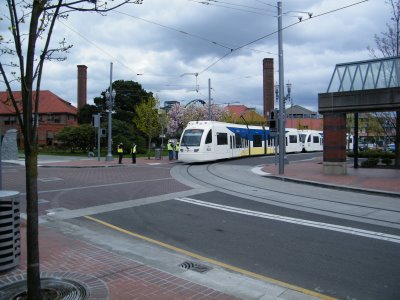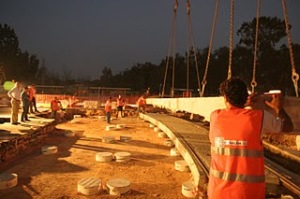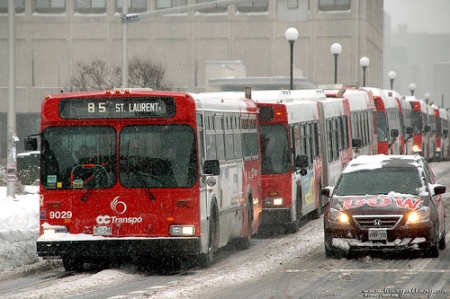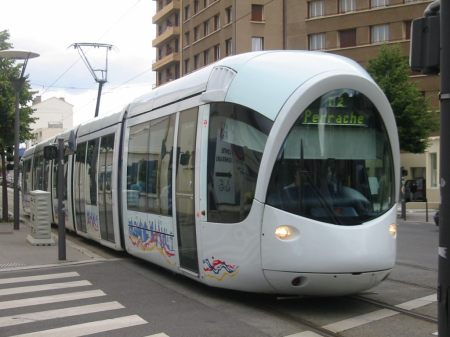Postings in other blogs have been painting an all too rosy a picture of BRT (Bus Rapid Transit) and this post should level the playing field somewhat. Just as a note, the Cambridge “Misguided Busway” is built on a former railway formation which greatly reduced initial cost estimates and as the guided bus project now stands, it would have been cheaper to reinstate the railway instead! Imagine, a modern LRT line with lawned rights-of-ways, rather than this start concrete guide way needed for the BRT.
£76m Leigh Guided Busway on hold over cost fears
Alan Salter – August 31, 2010Manchester Evening News
A controversial £76m busway plan in Greater Manchester has been put on hold.
A review has been ordered into the Leigh Guided Busway project – which has been on the drawing board since 1996 – even though contracts for vital preparatory work worth £1.3m have already been awarded.
The move comes after Richard Knowles – an Oldham councillor and Salford University professor of transport geography – was sent to Cambridge to see a similar scheme.
The Cambridge busway is infamous in the transport world for spiralling costs and delays. The bill for the 25-mile busway, between Huntingdon and Cambridge, has risen from £54m to £116m and could even reach £160m by the time it opens.
Now, the Conservative-Lib Dem coalition which controls the Greater Manchester Integrated Transport Authority has voted to review the Leigh busway – despite Labour opposition.
The project – linking Wigan, Leigh, Salford and Manchester – would see a special lane built for buses on the East Lancs Road. Four miles of the route – between Leigh and Ellenbrook – would see specially-adapted buses using ‘guided’ concrete tracks along the path of an old railway line.
Keith Whitmore, vice-chairman of the authority, said: “We are talking about a review which will take weeks rather than months. It would look at the costings and the way it operates in the light of what has happened in Cambridge.
“I visited Utrecht where they rejected the building of a second busway and decided to build a tram line instead. There is also the question of how the Leigh busway would operate – who exactly will use it has never really been tackled.
“If the review shows that everything is fine, then it can go ahead. But there has never been unanimous support for it.”
Dubbed the ‘misguided busway’ by opponents, the project has been seen in some quarters as a sop to Wigan and Leigh – which are not included in plans to expand the Metrolink.
For more on Cambridge’s ‘Misguided‘ busway:














